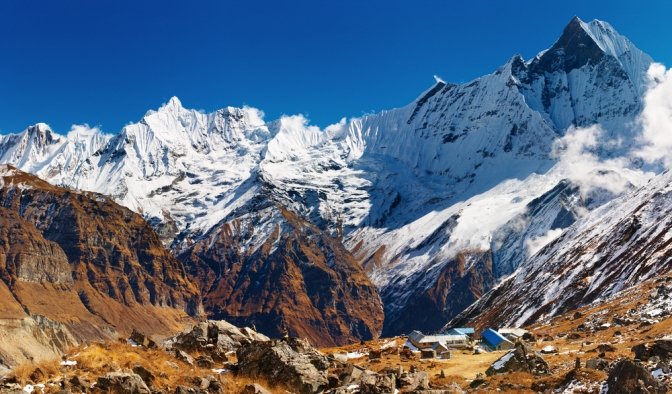The main peak of kanchenjunga trekking and its immediate satellites take the form of a giant cross which straddles the borders of three countries – Nepal , Tibet and the once independent kingdom but now Indian state of Sikkim . By virtue of the massif’s almost total isolation from any other mountain group, precise definition of its boundaries is quite unnecessary. Until 1849 Kangchenjunga was thought to be the world’s highest mountain, but today’s accepted height of 8,586m ranks it third, after Everest and K2 .
In addition to the main peak of kanchenjunga trekking, four subsidiary summits exceed 8000m, the most important being Kangchenjunga West, also known as Yalung Kang (8,505m). Of some twenty peaks exceeding 7,000m, the highest are Kambachen (7,903m), Jannu (7,710m), Jongsong (7,483m), Kabru (7,353m), Tent Peak (7,365m) and the Twins (7,350m). There are numerous impressive peaks over 6,000m which would have merited greater interest had they not been amongst such prodigious company.
This great cluster of peaks is highly glaciated and cradles five major glacial systems. Three of these, the Zemu, Talung, and Rathong, lie to the east of the massif and flow into Sikkim , eventually feeding the mighty Tista river. In Nepal , to the west, the Kangchenjunga and Yalung glaciers form the major sources of the Tamur river.
The intense glaciation is caused by the very high levels of precipitation to which Kangchenjunga is subjected. The combined effects of its considerable height and isolated location, south east of the main Himalayan chain, leaves it totally exposed to the full force of the advancing monsoon originating in the Bay of Bengal in early June.
Even when the monsoon finally withdraws towards the end of September, Kangchenjunga is slow to lose its veil of cloud and submit to the drier and more settled weather patterns of Autumn.
When much of the Greater Himalaya remained hidden beyond borders closed to outsiders, access to Kangchenjunga was only possible through British-controlled pre-partition India and the mountain’s eastern aspect became a familiar sight to visitors to Darjeeling . The situation changed little when Nepal ended its self-imposed isolation in 1950 because it refused to grant access to Kangchenjunga to more than a handful of mountaineering expeditions. Only since 1988 have a limited number of commercialized trekking parties been allowed to explore the mountain’s immediate environs.
Cultures of kanchenjunga trekking also have been preserved. Tibetan Buddhism is the most important religion in Sikkim and there are numerous monasteries dotted throughout the hills. In contrast, Hinduism is the main religion on the Nepal side of the border, where the tiny hill villages are inhabited by Rai and Limbu farmers.




